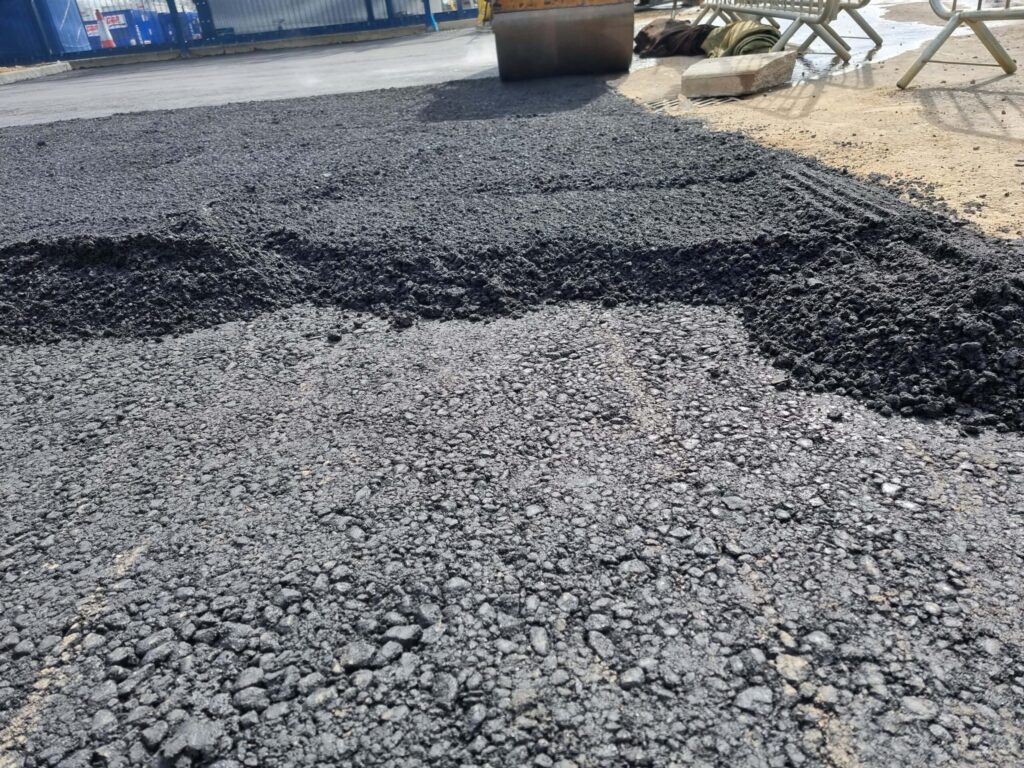Tarmac Roadway Rehabilitation: Transforming Aging Roads
Introduction: As communities grow and evolve, their infrastructure, including roadways, faces the challenge of ageing and wear. Ageing roads can develop cracks, potholes, and wear and tear, posing safety hazards and inconveniences for residents and travellers. Tarmac roadway rehabilitation is vital to revitalise these ageing roads and transform them into safer, smoother, and more durable surfaces. In this blog post, presented by Wickham Market Driveways, we’ll explore the importance of tarmac roadway rehabilitation and how it can make a significant difference in the life of a community.
The Challenges of Aging Roads
Ageing roads can present various challenges:
Safety Hazards: Cracks, potholes, and uneven surfaces pose safety risks for drivers, cyclists, and pedestrians.
Increased Maintenance: Aging roads require more frequent and costly repairs, straining local budgets.
Traffic Congestion: Pothole repairs and maintenance often lead to road closures and disruptions.
Reduced Aesthetics: Deteriorating roads can negatively impact the aesthetics of a neighbourhood or community.
Tarmac Roadway Rehabilitation: A Transformative Solution
Tarmac roadway rehabilitation offers several advantages for addressing these challenges:
Enhanced Safety: Repaired and resurfaced roads are safer for all users, reducing the risk of accidents and injuries.
Durability: Tarmac surfaces are known for their durability, offering a long-lasting solution that reduces the need for frequent repairs.
Smoothness: Smooth road surfaces improve driving comfort, reduce vehicle wear and tear, and enhance fuel efficiency.
Cost-Effectiveness: While initial rehabilitation costs can be significant, the long-term savings in reduced maintenance and repairs are substantial.
Improved Aesthetics: Freshly rehabilitated roads enhance the overall appearance of a community, contributing to its attractiveness and property values.
The Rehabilitation Process
Tarmac roadway rehabilitation involves several essential steps:
Assessment: Experts assess the condition of the road to determine the extent of damage and necessary repairs.
Surface Preparation: Old, damaged surfaces are removed, and the road is cleaned and prepared for resurfacing.
Resurfacing: New tarmac is laid, and a smooth, even surface is created using specialised machinery and techniques.
Finishing Touches: Line markings, road signs, and safety features are added to the rehabilitated road.
Quality Control: Rigorous quality control ensures the rehabilitated road meets safety and durability standards.
Community Impact
Tarmac roadway rehabilitation can have a transformative impact on a community:
Improved Safety: Safer roads reduce accidents and save lives.
Enhanced Quality of Life: Smoother, quieter roads improve the quality of life for residents.
Economic Benefits: Reduced maintenance costs and improved aesthetics can attract businesses and visitors.
Environmental Impact: Well-maintained roads can lead to reduced fuel consumption and emissions.
Conclusion: Tarmac roadway rehabilitation is a crucial investment in the future of communities. It addresses safety concerns, reduces maintenance costs, and contributes to the overall well-being and prosperity of the area. At Wickham Market Driveways, we understand the importance of revitalising ageing roads and are committed to providing top-quality tarmac roadway rehabilitation services that make a lasting difference.
Call us on: 01728 448 691
Click here to find out more about Wickham Market Driveways
Click here to complete our contact form and see how we can help with your driveway needs.

